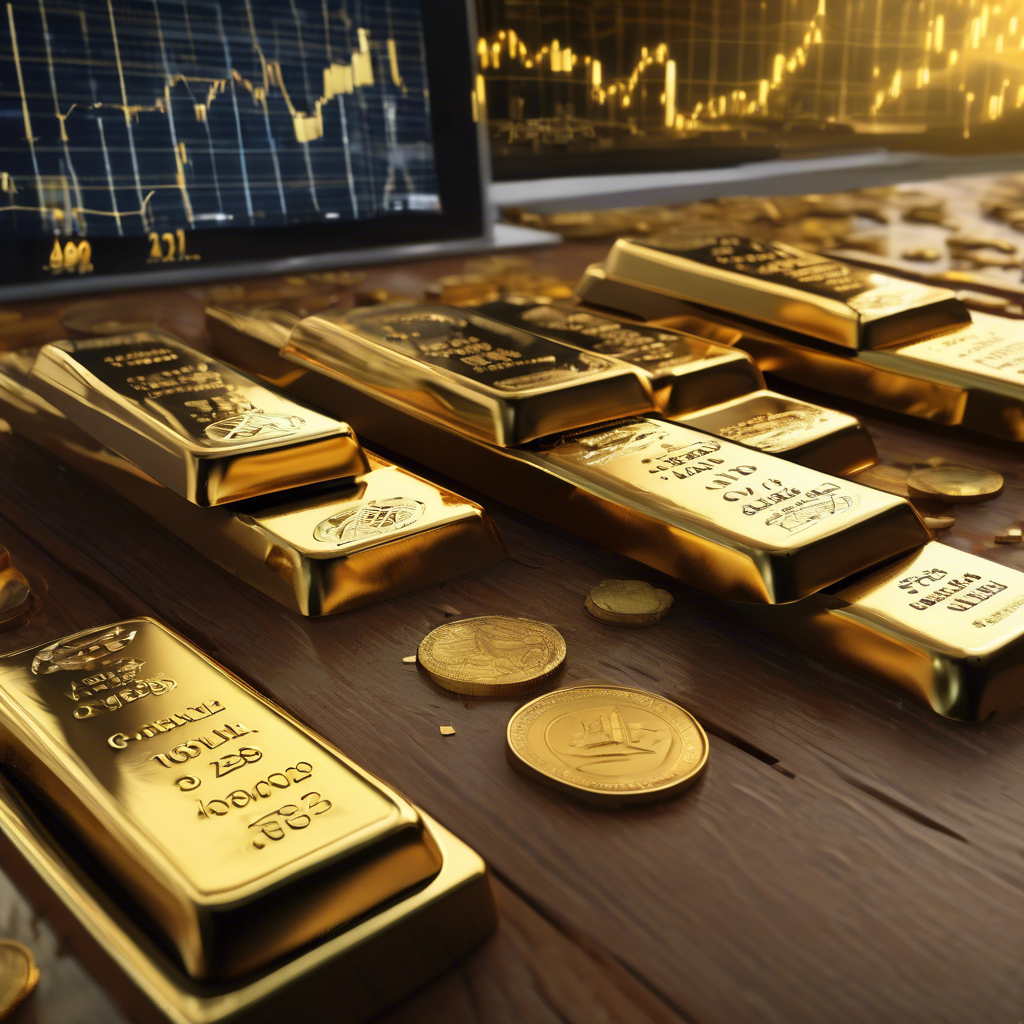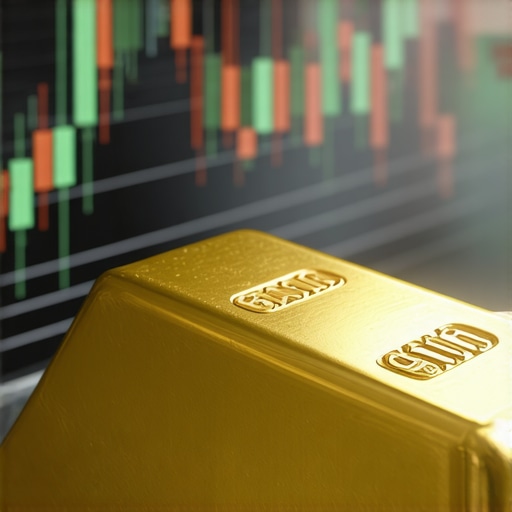Understanding Gold Demand Trends in 2025
As we look forward to 2025, evaluating gold demand trends becomes crucial for both seasoned investors and beginners. Gold has long been viewed as a safe haven asset, especially during times of economic uncertainty. Understanding the factors that influence gold demand can empower investors to make informed decisions about their portfolios.
The Importance of Gold in Investment Portfolios
Gold plays a pivotal role in diversifying investment portfolios. Many financial experts recommend allocating a portion of assets to gold to mitigate risks associated with market volatility. In 2025, this trend is expected to intensify as investors seek stability amidst global economic fluctuations. The importance of gold in a financial portfolio cannot be overstated, and it is essential for investors to grasp how gold demand trends will shape their investment strategies.
Key Factors Influencing Gold Demand in 2025
Several factors are likely to influence gold demand trends in 2025. These include:
- Economic Conditions: Economic growth or recession can significantly affect gold demand. During economic downturns, investors often flock to gold as a safe asset.
- Inflation Rates: Rising inflation typically drives gold prices higher, as investors seek to preserve their purchasing power.
- Central Bank Policies: Central banks around the world continue to buy gold to bolster their reserves. This trend can create upward pressure on gold prices.
- Geopolitical Events: Political instability and conflicts can lead to increased gold demand as investors turn to gold for protection.
Keeping an eye on these factors can help investors predict shifts in gold demand, enabling them to adjust their investment strategies accordingly.
Analyzing Gold Demand Trends: Essential Techniques
To effectively evaluate gold demand trends, investors should employ various analytical techniques. One approach is to monitor global economic indicators, such as GDP growth rates, unemployment figures, and inflation data. Additionally, staying informed about central bank activities and geopolitical events can provide valuable insights into potential shifts in gold demand.
Furthermore, analyzing historical pricing trends can offer a clearer picture of how gold has responded to different economic conditions. This analysis can be complemented by consulting expert insights, such as those found in articles like gold price forecasts.
Conclusion: Preparing for the Future of Gold Investments
In conclusion, understanding how to evaluate gold demand trends in 2025 is essential for any investor looking to navigate the complexities of the gold market. By considering economic conditions, inflation rates, and geopolitical factors, investors can make more informed decisions. Additionally, leveraging analytical techniques will enhance their ability to anticipate changes in demand. As always, staying educated and adaptable will be key to successful gold investments in the coming years.
Strategies for Investing in Gold Amid Changing Demand
With the evolving landscape of gold demand trends, investors must adopt strategic approaches to maximize their investment potential. Understanding the various investment avenues, such as gold bullion, coins, and exchange-traded funds (ETFs), can provide insights into which options align best with individual financial goals. Investing in gold for beginners offers foundational knowledge, guiding new investors through the complexities of the gold market.
Gold Bullion vs. Gold ETFs: Making the Right Choice
When considering gold as an investment, one must weigh the benefits of physical gold against gold ETFs. Gold bullion provides tangible ownership, appealing to those who prefer a physical asset, while gold ETFs offer liquidity and lower transaction costs. Analyzing the physical gold vs. gold ETFs debate can help investors make informed decisions based on their investment strategies and risk tolerance.
The Role of Gold Mutual Funds in Diversification
Gold mutual funds can serve as an effective tool for diversification within a portfolio. They typically invest in a mix of gold-related assets, allowing investors to gain exposure to the gold market without the need to manage physical gold. Exploring the benefits of investing in gold mutual funds can reveal how they can be a viable alternative for those who prefer a hands-off approach to gold investing.
Understanding the Impact of Global Events on Gold Demand
Global events can significantly influence gold demand trends. Economic crises, natural disasters, and political unrest often lead to increased investment in gold as a safe haven asset. For instance, during the COVID-19 pandemic, gold prices surged as investors sought stability amidst uncertainty. Monitoring how global events impact gold prices is crucial for anticipating market shifts and optimizing investment strategies.
Inflation and Gold Demand: A Historical Perspective
Historically, inflation has been a key driver of gold demand. As inflation rates rise, the purchasing power of currency decreases, prompting investors to turn to gold as a hedge against inflation. Understanding the impact of inflation on gold prices can equip investors with the knowledge to make timely decisions that capitalize on market conditions.
Geopolitical Factors and Their Influence on Gold Prices
Geopolitical tensions often lead to fluctuations in gold prices. Investors should remain alert to international conflicts, trade disputes, and policy changes that may affect the gold market. Evaluating the impact of global events on gold prices can help investors gauge potential risks and adapt their strategies accordingly.
Conclusion: Staying Ahead in Gold Investments
As we move into 2025, understanding gold demand trends will be paramount for investors looking to navigate the complexities of the gold market. By employing strategic investment approaches, monitoring global events, and recognizing the significance of economic indicators, investors can position themselves to make informed decisions. Ultimately, staying educated about the gold market will empower investors to maximize their returns and secure their financial future.
Exploring Gold Demand: Factors Affecting Price Movements
The gold market is influenced by various factors that shape demand and subsequently affect prices. Understanding these dynamics is essential for investors aiming to make informed decisions. For instance, industrial demand for gold in sectors like electronics and jewelry can lead to price fluctuations. Additionally, seasonal trends, such as increased demand during holidays, can impact gold prices. Staying updated on gold demand trends will help investors anticipate market changes and adjust their strategies accordingly.
The Significance of Central Bank Policies on Gold Prices
Central banks play a pivotal role in the gold market through their buying and selling activities. When central banks increase their gold reserves, it often signals a bullish outlook, influencing market sentiment. Conversely, selling gold reserves can lead to price declines. Understanding how central bank purchases impact gold prices is crucial for investors looking to capitalize on market shifts.
Technological Advancements in Gold Investment
Investing in gold has evolved with technological advancements, offering new avenues for participation. Digital platforms now allow investors to buy and trade gold online, making it more accessible than ever. Gold-backed cryptocurrencies and blockchain technology are also emerging as innovative investment options. By exploring essential techniques for trading gold, investors can leverage these advancements to enhance their portfolios.
Evaluating Gold Mining Stocks: Risks and Rewards
Investing in gold mining stocks can provide exposure to the gold market with the potential for higher returns compared to physical gold investments. However, this approach comes with its own set of risks, including operational challenges and fluctuating production costs. Analyzing gold mining stocks: risks and rewards will help investors determine if this strategy aligns with their risk tolerance and investment goals.
Understanding Gold Supply Chain Dynamics
The gold supply chain involves various stages, from mining to refining and distribution. Each stage presents unique challenges that can affect supply levels and, consequently, prices. For instance, geopolitical tensions in mining regions can disrupt production and lead to supply shortages. By understanding the gold supply chain, investors can better anticipate market fluctuations and make informed investment choices.
Long-Term vs. Short-Term Gold Investment Strategies
Investors must decide whether to adopt a long-term or short-term approach to gold investing. Long-term strategies often involve holding physical gold or gold-related assets for extended periods, benefiting from price appreciation over time. On the other hand, short-term strategies may focus on trading gold based on market trends and price movements. Evaluating gold investment strategies will allow investors to choose the method that best suits their financial objectives.
Conclusion: Preparing for Future Gold Market Trends
As we approach 2025, staying informed about the gold market’s evolving landscape is vital for investors. By understanding the factors driving demand, evaluating investment options, and leveraging technology, investors can position themselves for success. Continuous education and strategic planning will empower investors to navigate the complexities of the gold market and maximize their potential returns.
Understanding the Role of Gold in Hedge Against Inflation
Gold has historically served as a hedge against inflation, preserving purchasing power when fiat currencies weaken. As inflation rates rise, investors often flock to gold as a safe haven. This is due to gold’s intrinsic value and its ability to maintain worth in turbulent economic times. To understand how inflation impacts gold prices, investors should monitor economic indicators and central bank policies that influence currency strength.
Exploring Gold ETFs: Benefits and Considerations
Exchange-Traded Funds (ETFs) have become a popular vehicle for gold investment, offering liquidity and convenience. Gold ETFs allow investors to gain exposure to gold without the need for physical storage, making them an attractive option for many. However, understanding the differences between physical gold and ETFs is crucial for making informed investment decisions. Factors such as management fees, tracking accuracy, and market volatility should be considered.
Identifying Quality Gold Dealers: Essential Tips
Choosing a reliable gold dealer is fundamental to successful gold investment. Investors should look for dealers with a strong reputation, transparent pricing, and excellent customer service. Researching how to identify quality gold dealers will help investors avoid scams and ensure they receive fair value for their investments. Always check reviews and ratings before making any transactions.
Analyzing Gold Market Trends: Key Indicators to Monitor
To navigate the gold market effectively, investors must stay informed about key indicators that influence gold prices. These include geopolitical events, changes in interest rates, and shifts in consumer demand. By analyzing gold market trends, investors can make strategic decisions that align with their investment goals.
Understanding the Importance of Diversification in Gold Investments
Diversification is a critical strategy in any investment portfolio, including those involving gold. By allocating a portion of assets to gold, investors can mitigate risks associated with market volatility. This approach enhances overall portfolio stability. To learn more about diversifying your portfolio with gold, consider consulting with financial advisors who specialize in precious metals.
Future Outlook: Gold Prices Beyond 2025
As we look ahead, understanding the potential future of gold prices is essential for investors. Factors such as economic recovery, technological advancements in mining, and global demand shifts will shape the gold market. Staying updated with expert insights on future gold prices will provide investors with valuable information to make informed decisions in an ever-changing market landscape.
Frequently Asked Questions About Gold Investment
1. Why is gold considered a safe investment during inflation?
Gold is viewed as a safe investment during inflation because it has intrinsic value that tends to hold steady or even increase as the purchasing power of fiat currencies declines. Historical data shows that when inflation rises, gold prices often follow suit, making it a preferred asset for preserving wealth in uncertain economic conditions.
2. How can I start investing in gold?
Starting to invest in gold can be done in several ways. You can purchase physical gold in the form of coins or bars, invest in gold ETFs, or buy shares in gold mining companies. It’s important to research and understand each method’s pros and cons to choose the one that best fits your investment strategy.
3. What are the risks associated with investing in gold?
While gold can be a stable investment, it does carry risks. These include market volatility, the potential for price declines, and the costs associated with purchasing and storing physical gold. Investors should weigh these risks against their potential for capital appreciation and portfolio diversification.
4. How do geopolitical events affect gold prices?
Geopolitical events often lead to uncertainty in financial markets, which can drive investors toward gold as a safe haven. Events like wars, political instability, and trade conflicts can result in increased demand for gold, thereby pushing its prices higher.
5. Should I invest in gold for the long term or short term?
Whether to invest in gold for the long term or short term depends on your investment goals. Long-term investors may benefit from gold’s historical appreciation and hedging against inflation, while short-term traders might capitalize on price fluctuations. Assessing your risk tolerance and financial objectives is key.
6. Are gold ETFs a good alternative to physical gold?
Gold ETFs can be a good alternative to physical gold for many investors, as they offer liquidity, ease of trading, and lower storage costs. However, investors should consider management fees and the ETF’s tracking accuracy compared to physical gold prices before making a decision.
7. How often should I review my gold investment?
It’s advisable to review your gold investment regularly, ideally on an annual basis or whenever significant market changes occur. This allows you to adjust your portfolio in response to shifts in the economy, inflation rates, and your personal financial goals.
8. What factors should I consider when choosing a gold dealer?
When selecting a gold dealer, consider their reputation, customer service, pricing transparency, and whether they offer a buyback policy. Checking online reviews and ratings can also help ensure you choose a reliable dealer.
9. How can I diversify my investment portfolio with gold?
Diversifying your investment portfolio with gold can be achieved by allocating a specific percentage of your assets to gold alongside other investments like stocks, bonds, and real estate. This strategy can help mitigate risks and enhance overall portfolio stability.
10. What resources can I use to stay informed about gold market trends?
To stay informed about gold market trends, consider following reputable financial news websites, subscribing to industry newsletters, and accessing resources from organizations such as the World Gold Council. Regularly reading expert analyses and market reports can help you make informed investment decisions.
Authority Resources for Gold Investment
When seeking trusted information and insights on gold investment, the following resources can be invaluable:
- World Gold Council – Offers comprehensive research and data on gold markets, trends, and investment strategies.
- Kitco News – Provides up-to-date news and analysis on precious metals, including gold, and features market charts and prices.
- Investing.com – A financial website offering news, analysis, and real-time data on various investment assets, including gold.
- BullionVault – Offers insights into buying and selling physical gold and silver, along with market news and analysis.
- Forbes – A leading financial publication that frequently covers gold investment and market trends.
Conclusion: The Strategic Edge of Gold Investment
In conclusion, investing in gold presents a strategic opportunity for wealth preservation and diversification in an uncertain economic landscape. By understanding market dynamics, exploring various investment avenues, and leveraging trusted resources, investors can navigate the complexities of the gold market with confidence. Whether through physical gold, ETFs, or mining stocks, gold remains a time-tested asset for those looking to safeguard their financial future. Stay informed, diversify wisely, and consider gold as a pivotal component of your investment strategy.











One aspect that stood out to me in the analysis of gold demand trends for 2025 is the significant role central banks play in shaping the market. Their continuous accumulation of gold reserves seems to be a strategic move that not only signals confidence in gold but also directly impacts prices due to altered supply and demand dynamics. I’ve noticed that during previous periods when central banks increased their gold holdings, it often led to heightened investor interest and upward price momentum. At the same time, geopolitical tensions continue to be a wildcard—events such as trade disputes or conflicts can spike demand unpredictably. Considering these factors together, I wonder how investors can best balance their portfolios to leverage gold’s potential without overexposing themselves to volatility caused by such external influences. Does anyone have practical strategies or experiences balancing gold allocations in the face of rapidly shifting geopolitical landscapes? Additionally, how much weight do you give to central bank policies in your gold investment decisions compared to other indicators like inflation or economic growth?